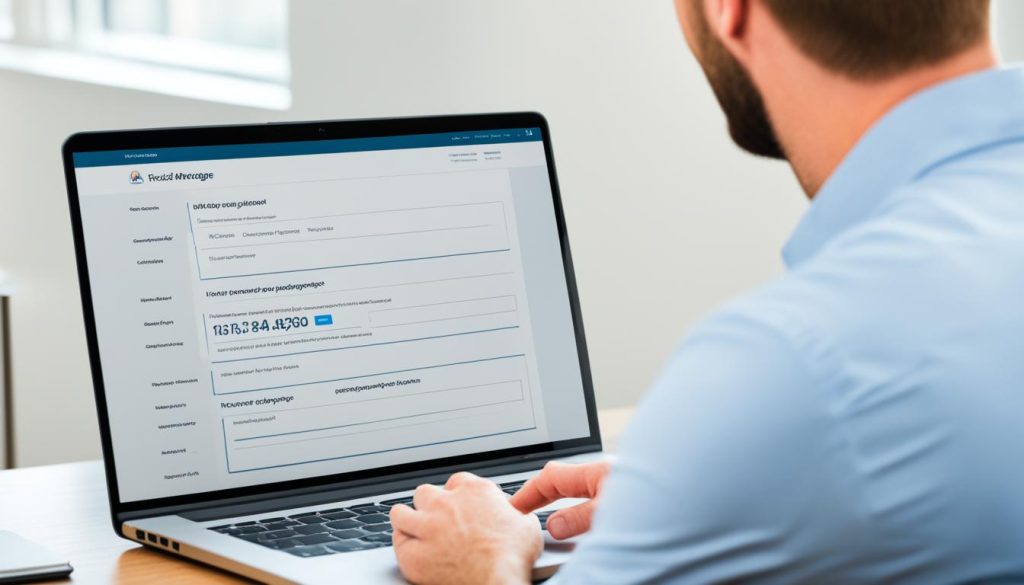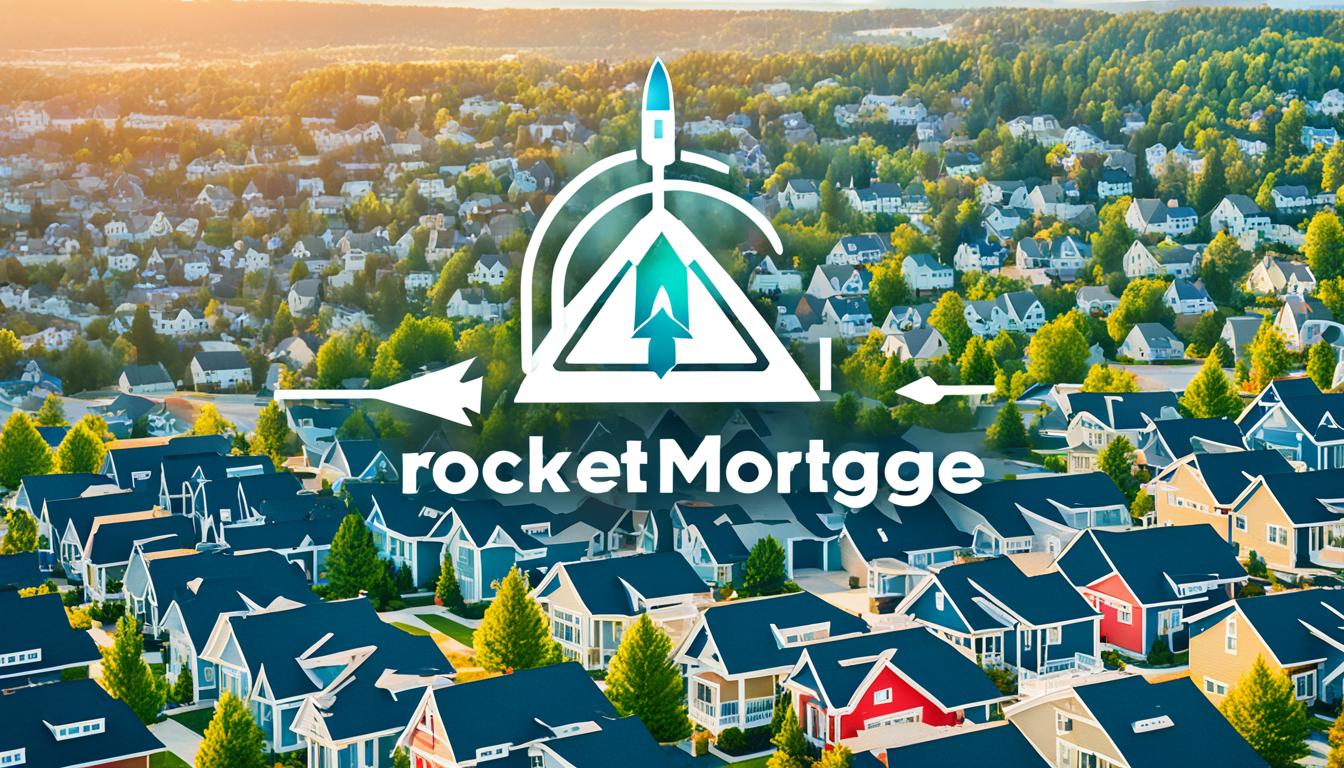Are you a homeowner looking for flexible financing options? If so, you might be interested in learning about home equity lines of credit (HELOCs) and how they can help you tap into the equity in your home. While Rocket Mortgage does not offer HELOCs directly, they can provide valuable insights and information to help you understand this type of loan and compare it to other home equity options.
A HELOC is a type of second mortgage that allows you to borrow against the equity you’ve built in your home. To qualify for a HELOC, you’ll typically need a good credit score, a qualifying amount of equity in your home, a responsible payment history, a low debt-to-income ratio, and reliable income. These qualifications are similar to those for a mortgage refinance.
HELOCs have two distinct phases: the draw period and the repayment period. During the draw period, which can last for several years, you can borrow funds from your line of credit and make minimum or interest-only payments. This gives you the flexibility to use the funds as needed.
Once the draw period ends, the repayment period begins. During this time, you’ll be required to make full monthly payments that cover both the principal and interest. It’s important to understand the repayment phases and payment calculations to effectively manage your HELOC.
Key Takeaways:
- A HELOC is a type of second mortgage that allows homeowners to borrow against the equity in their homes.
- Rocket Mortgage does not offer HELOCs directly, but they can provide information and insights about this type of loan.
- To qualify for a HELOC, homeowners typically need good credit, a qualifying amount of equity, responsible payment history, low debt-to-income ratio, and reliable income.
- HELOCs have two phases: the draw period and the repayment period, each with its own payment requirements.
- Understanding the pros and cons of a HELOC, as well as exploring alternative options, is crucial before making a decision.
What Is a Home Equity Line Of Credit?
A home equity line of credit (HELOC) is a type of second mortgage that allows homeowners to borrow against the equity in their homes. This financial tool provides homeowners with the flexibility to access funds for various purposes, including home improvement projects, education expenses, and debt consolidation.
To qualify for a HELOC, homeowners must meet certain requirements similar to those for a mortgage refinance. These requirements typically include having a good credit score, maintaining a qualifying amount of equity in the home, demonstrating a responsible payment history, having a low debt-to-income ratio, and proving reliable income.
During the draw period of the HELOC, homeowners have the option to borrow from the line of credit and make minimum or interest-only payments. The draw period is typically a specified number of years, during which homeowners have the freedom to access funds as needed. However, once the draw period ends, the repayment period begins, requiring homeowners to make full monthly payments that cover both the principal and interest.
HELOCs offer advantages and disadvantages. On the positive side, a HELOC allows homeowners to consolidate debt and provides them with the flexibility to use funds for various needs. Additionally, the interest paid on a HELOC may be tax-deductible if the funds are used for home improvements or other qualifying purposes. However, HELOCs also come with upfront costs, and failure to make payments could potentially result in the loss of one’s home.
Understanding the nature of a HELOC and its potential uses is crucial for homeowners considering this financial option. It is important to carefully evaluate one’s financial circumstances and goals before deciding to pursue a HELOC or explore alternative financing solutions.
How to Qualify for a HELOC
Qualifying for a home equity line of credit (HELOC) requires meeting specific requirements that determine your eligibility for this financial option. Lenders assess several factors when considering your HELOC application, including your credit score, equity in your home, debt-to-income ratio, and income stability.
Credit Score: A good credit score is crucial when applying for a HELOC. Most lenders prefer borrowers with a credit score above the mid-600s, but ideally above 700. A higher credit score demonstrates your ability to manage debt responsibly, increasing your chances of qualifying for favorable terms and rates.
Equity Requirement: To be eligible for a HELOC, you must have a qualifying amount of equity in your home. Typically, lenders require at least 15% – 20% equity in the property. Equity represents the value of your home that you truly own, and it serves as collateral for the line of credit.
Debt-to-Income Ratio: Lenders assess your debt-to-income ratio (DTI) to understand your ability to manage additional debt. A low DTI indicates that you have sufficient income to cover your existing financial obligations as well as the potential HELOC payments. Aim for a low DTI by minimizing your monthly debt payments compared to your income.
Income Requirement: Lenders typically require you to prove reliable income to qualify for a HELOC. This is done to ensure that you have the financial means to make the required loan payments. Income verification may involve providing recent pay stubs, tax returns, or other documentation as proof of your income stability.
Meeting these qualification requirements is essential as they determine your eligibility for a HELOC and help you obtain the best deal suited to your financial situation. By having good credit, a qualifying amount of equity, responsible payment history, a low debt-to-income ratio, and reliable income, you increase your chances of securing a HELOC and gaining access to the funds you need.

Understanding HELOC Repayment
A home equity line of credit (HELOC) has two distinct phases: the draw period and the repayment period. During the draw period, homeowners have the flexibility to borrow from the line of credit and make minimum or interest-only payments on the amount borrowed.
If the credit limit is reached during the draw period, homeowners will need to repay a portion of the balance before being able to borrow more. It’s also worth noting that the draw period can be extended by refinancing the HELOC.
Once the draw period comes to an end, the repayment period begins. During this time, homeowners are required to make full monthly payments that cover both the principal and the interest.
If interest-only payments were made during the draw period, the monthly payments will increase during the repayment period to ensure that the loan gets paid off within the agreed-upon terms.
The length of both the draw period and the repayment period will vary depending on the specific loan terms. For example, a HELOC might have a 30-year term with a 10-year draw period and a 20-year repayment period.
Understanding the various repayment phases and how the payment calculation works is crucial for effectively managing a HELOC. It allows homeowners to plan their finances accordingly and ensure they meet their payment obligations.

| Phase | Description |
|---|---|
| Draw Period | During this phase, homeowners can borrow from the line of credit and make minimum or interest-only payments on the amount borrowed. |
| Repayment Period | Once the draw period ends, homeowners must make full monthly payments that cover both the principal and the interest. |
Pros and Cons of a HELOC
Home equity lines of credit (HELOCs) offer several benefits and drawbacks that homeowners should consider before applying. Understanding both the advantages and disadvantages is crucial in making an informed decision about whether a HELOC is the right choice for you.
Benefits of a HELOC
- Consolidate Debt: A HELOC allows homeowners to consolidate high-interest debts into one loan with a lower interest rate, potentially saving money on interest payments.
- Flexible Use of Funds: With a HELOC, homeowners have the flexibility to use the borrowed funds for various purposes, such as home renovations, education expenses, or unexpected emergencies.
- Continuous Borrowing: Unlike a traditional loan, a HELOC allows homeowners to continuously borrow against the available credit, giving them ongoing access to funds as needed.
- Potentially Tax-Deductible Interest: If the borrowed funds are used for home improvements, the interest paid on a HELOC may be tax-deductible, providing potential tax benefits.
Disadvantages of a HELOC
- Upfront Costs: HELOCs often come with upfront costs, such as application fees, closing costs, and appraisal fees, which can add to the overall expense.
- Risk of Losing the Home: Failure to make payments on a HELOC can result in the risk of foreclosure, as the home acts as collateral for the loan.
- Potential Rate or Payment Increases: Most HELOCs have variable interest rates, meaning that monthly payments can increase if interest rates rise, potentially leading to higher payment amounts.
It is important to consider the specific financial goals and circumstances before deciding on a HELOC. While a HELOC can be beneficial for financially advantageous purposes, such as increasing the value of the home or paying for higher education, the potential drawbacks, such as upfront costs and the risk of losing the home if payments are not made, should also be carefully considered. By weighing the pros and cons, homeowners can make an informed decision that aligns with their financial needs and goals.
How to Apply for a HELOC with Rocket Mortgage
While Rocket Mortgage does not offer HELOCs, they can provide valuable information on how to apply for a Home Equity Line of Credit (HELOC) through other lenders. The HELOC application process is similar to that of other mortgage loans and involves several key steps:
- Research and Select a Reputable Lender: Begin by exploring different lenders and comparing their HELOC options. Look for lenders with competitive rates, favorable terms, and a solid reputation in the industry.
- Gather Required Documents: To initiate the HELOC application, you will need to provide necessary documents such as proof of income, bank statements, tax returns, and identification.
- Get an Appraisal: An appraisal of your home is typically required to determine its current market value. This valuation plays a crucial role in determining the loan-to-value ratio (LTV) and the amount of credit you may qualify for.
- Close on the Line of Credit: Once you have selected a lender and completed all necessary documentation, you will proceed to closing on the HELOC. During this process, you’ll review and sign various legal documents.
- Start the Draw Period: After closing, you’ll enter the draw period, during which you can tap into your line of credit as needed. It’s important to carefully manage your spending and make payments as required during this phase.
- Prepare for Repayment: As the draw period ends, the repayment period begins. Ensure you are aware of the payment structure, interest rates, and associated fees during this phase.
Before applying for a HELOC, it is essential to consider various factors, such as:
- The purpose of the loan and whether a HELOC aligns with your financial goals
- The equity and current value of your property
- Interest rates and terms offered by different lenders
- Your credit score and financial stability
- The total loan amount and credit limit available
- Alternative options like cash-out refinancing or home equity loans
By carefully considering these factors and following the established application process, homeowners can navigate the process of obtaining a HELOC and make informed decisions regarding their home equity financing.

| Advantages | Disadvantages |
|---|---|
|
|
Conclusion
In conclusion, a home equity line of credit (HELOC) can be a flexible financing solution for homeowners to tap into the equity in their homes. Although Rocket Mortgage does not offer HELOCs directly, they can provide valuable information and guidance on how HELOCs work.
A HELOC has certain qualification requirements, including good credit, a qualifying amount of equity, responsible payment history, a low debt-to-income ratio, and reliable income. Understanding the repayment phases, pros and cons, and the application process is crucial for making an informed decision.
Before deciding on a HELOC, homeowners should carefully consider their financial situation, needs, and goals. It’s important to weigh the benefits and drawbacks of a HELOC, and also explore alternative options such as cash-out refinancing or home equity loans.
By considering all these factors, homeowners can determine whether a HELOC is the right choice for them and make confident financial decisions.
